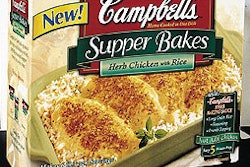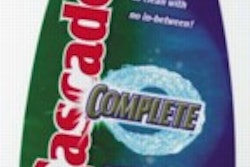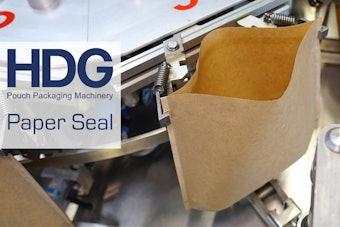
Overall cost—not price—is one of the primary factors that end-users look at in selecting print vendors, according to three representatives of packaging buyers. “After all, no one selects gravure printing because of price,” one said.
Orlando, FL, was the site for the fourth marketing and technical conference of the Packaging and Label Gravure Assn. (Springfield, OH). Three powerful gravure packaging buyers gave the printers ideas about how and why they select vendors.
Stacey Braxton of Brown & Williamson Tobacco, Todd Jones of Miller Brewing, and Pam Clark from Nestlé USA’s Prepared Foods Division were the featured speakers for the conference theme: Meeting the end-user challenge.
The program also included a session of converter presentations, as well as many presentations on new technologies for gravure printers, given by material, equipment, and service providers. Also announced were the winners in the annual gravure Print Awards competition. But there was little question that the packaging buyers were the main attraction.
Stacey Braxton is now a senior materials manager at Brown & Williamson in Richmond, VA, a company she’s worked for since 1990 in a variety of positions. Her current responsibilities include technical issues for all printed packaging materials. That encompasses some $150 million/yr out of $250 million in all type of packaging materials for a company with $4 billion in sales. B&W is also part of British Tobacco. “So when you add in what we spend overseas, it’s probably two to three times our expenditures here,” she said.
Committed to gravure
She certainly won the printers’ approval when she explained that 98% to 99% of all printed materials purchased by the company are printed gravure. It’s not because of the price, she emphasized, but rather the quality that gravure delivers.
“We choose a supplier based on the overall cost. We’ve been in this business a long time, and we’ve learned that low price isn’t necessarily the lowest cost,” she said. “We have a pretty rigorous material test process, including machine testing in several stages, R&D testing, and sensory and performance tests.”
Braxton explained that her company operates manufacturing “modules” that produce 10ꯠ cigarettes/min and cost up to $12 million each. Some machines pack those cigarettes at rates up to 750 packs/min. “Obviously, we can’t afford to have these machines sitting idle, so any material that won’t run effectively can cost us a lot of money. Our materials have to be right to run on these machines,” she stated.
Because of the company’s tremendous volume, management is downright picky in selecting vendors. “We’re demanding and we’re hard to work with,” she cautioned. One reason why printed packaging is so critical to B&W is that, due to government restrictions, “packaging is just about our only advertising mechanism to gain market share,” she told the group.
Certifying vendors
Braxton explained that B&W employs a Supplier Certification Process that eventually results in the use of three main gravure printing suppliers. The process is done once each year, plus a follow-up every six months. The audit involves B&W bringing 10 people to the supplier’s location to evaluate all aspects of their business, from finance to production to customer service.
After the certification process, the team then rates the vendor on a scale of one to four. If a company doesn’t score three or better, it won’t be certified as a vendor to B&W.
“We like to have dedicated personnel for customer service,” she says. “Most of our suppliers are located within a couple of hours [of our location], so they can personally respond quickly to any issues of quality we may have.”
Like the other two manufacturers, Braxton says her company focuses on creating long-term relationships. Two new initiatives in this regard are a couple of Web-enabled programs that relate to supply chain management. “Some key suppliers are hooked into our systems so we avoid having to issue POs,” she says. “These companies can look at our production schedule through the system so they can see which materials might be running low. And they’re responsible for maintaining inventories of the products we buy from them.” One is called MatLink for packaging materials; another is for access to the company’s graphics. These programs, she says, are still at the early stage of implementation.
‘Efficiences of cooperation’
For his part Todd Jones, purchasing manager at Milwaukee-based Miller Brewing, helped printers see the difference between a strategic alliance and a market-based relationship with vendors. Jones is currently responsible for all the glass and labels purchased by Miller.
“A supplier partnership is a strategic alliance designed to create more value than is possible in a market relationship,” he told PLGA attendees. “That’s a value that could not exist if not for the creation of the partnership.” A market relationship can be best described as the classic “arms-length” interaction between supplier and customer.
His goal as a purchasing manager, is to “have the best suppliers for Miller Brewing. But I also want Miller Brewing to be the best customer for these suppliers.”
For example, Jones reported that nearly 100% of aluminum cans are purchased from a single source, accounting for $600 million/yr. The same is true for glass purchases that total about $500 million/yr. Something like 80% of its cartons come from one source, totalling about $100 million/yr. And he announced that North Star Print Group, Miller Brewing’s Supplier of the Year, has been selected as the sole source for Miller’s labels. This, he said, shows how important strategic alliances are to Miller’s purchasing philosophy.
In answer to a question from the floor, Jones said that these alliances don’t necessarily lock out a company from bringing an idea to Miller. But with these partnerships, he cautioned, “it’ll be a tough sell.”
The advantages of a partnership are not gained by lowering the costs for each firm individually, but from integrating each firm’s separate processes into a seamless operation. “Research has shown that 20 to 30 percent of savings in a successful alliance,” he said, “comes from the efficiencies of cooperation.”
Improving communications
The goal of Pam Clark, director of packaging communication for Nestlé’s Prepared Foods Division, is to improve the relationships between the color separator, engraver and printer. At Nestlé, she’s responsible for all design and prepress in her division and also support for prepress partnerships throughout all Nestlé divisions.
Her slide presentation at the technical and marketing conference was titled “Great Expectations (and how to realize them).”
Clark offered 10 steps to improve communications, which she admitted were based primarily on common sense. However, she pointed out, “common sense is not common!” Along with simple ideas like honesty, preparation, and accessibility, she added some twists. For example, she pointed out that technical people often have difficulty with nontechnical issues like people skills.
One of her points was called Extraordinary Stress Prevention. That can be accomplished, she said, through an agreement on expectations, promising only what you can deliver, documenting and clarifying each step, and keeping a close watch on the schedule.
Having a point person for each project is critical, she said. And she pointed out that the customer is not always right, so she prefers to work with vendors who will, respectfully, challenge Nestlé. However, she also says the best partners will remain positive and provide options and ideas when problems arise.
At Nestlé, Clark said the regular pre-production meeting on a project usually involves all of the Nestlé team, along with the printer, the film supplier, the engraver and sometimes even a representative of the company supplying the inks. And she cautioned the printers, “a point person should always have a well-prepared back up person.”
At the end of the conference, Bill Klein, executive director, indicated that the next PLGA marketing and technical conference will focus on the gravure business in South and Central America.
Along with the two packages shown here, the group honored nine other winners in its competition. More details and photos can be seen at packworld.com/go/gravure.





















